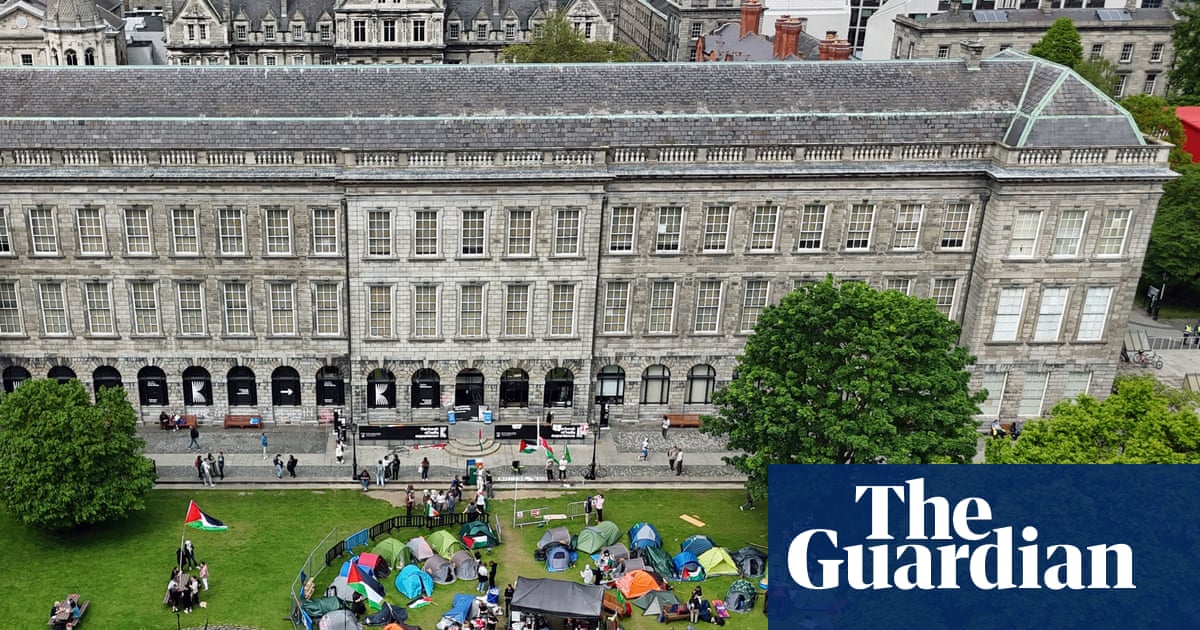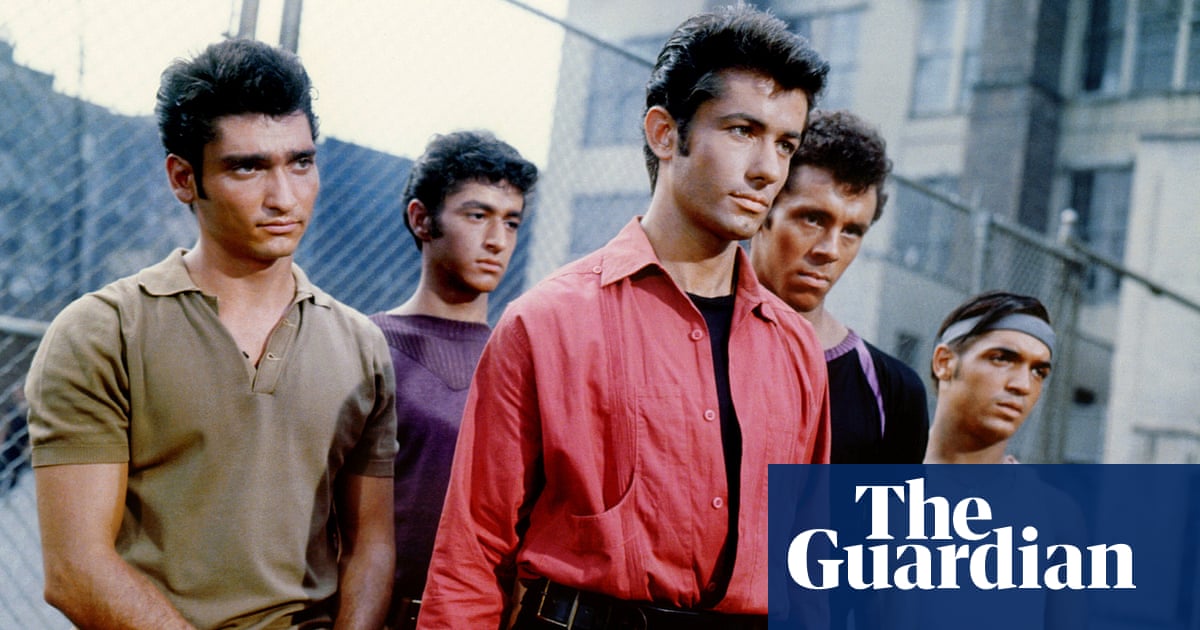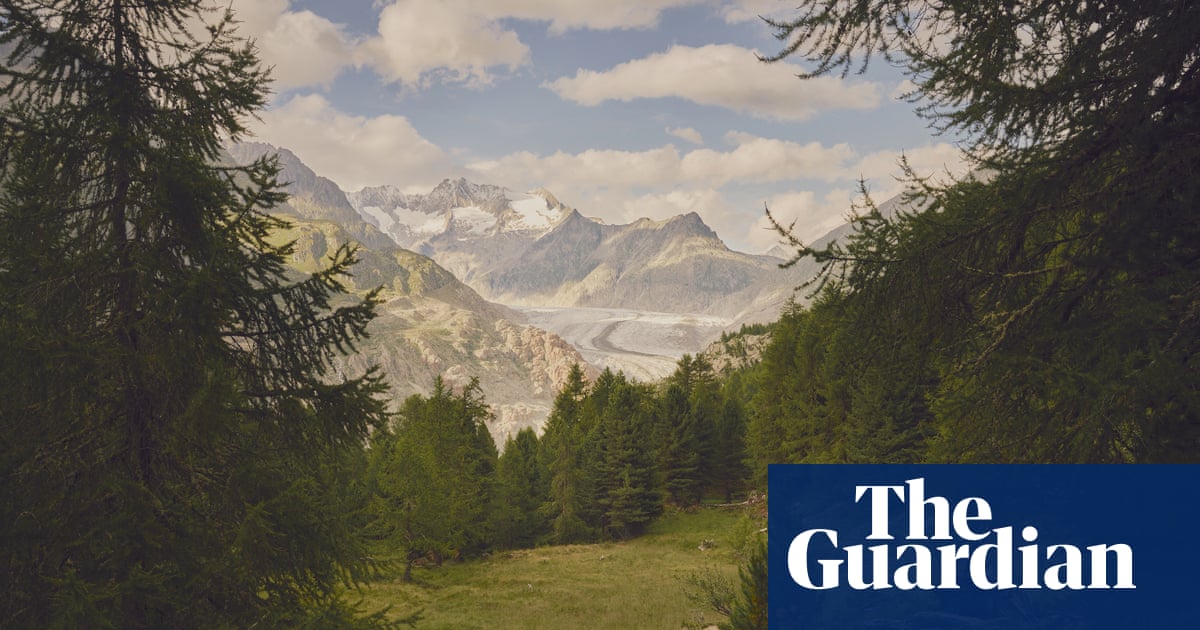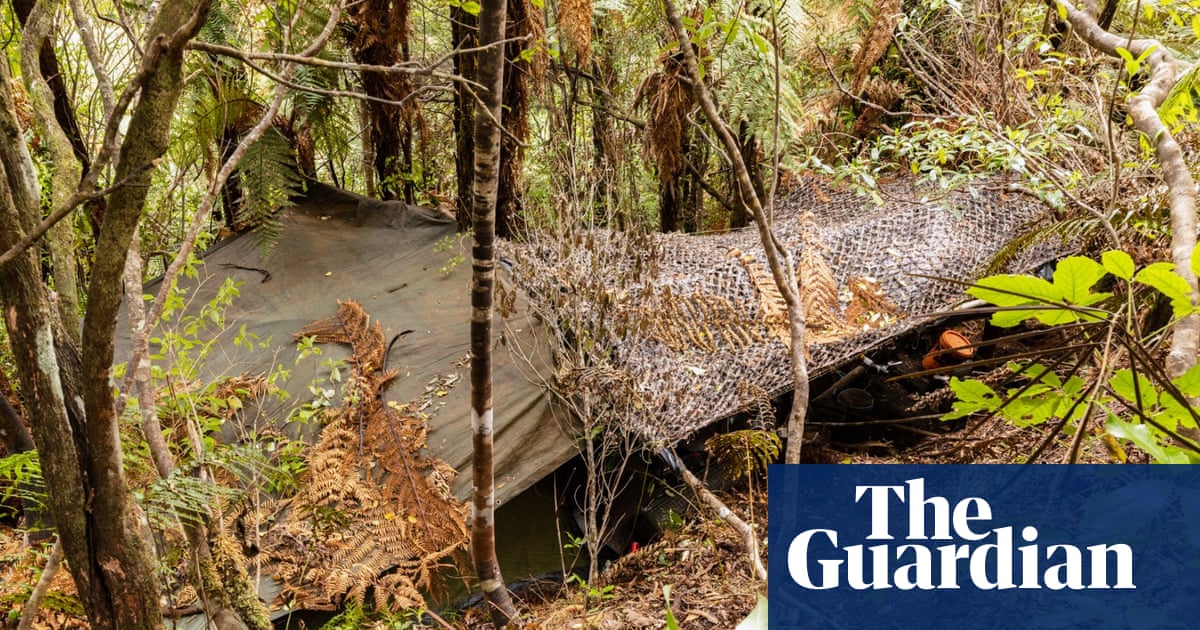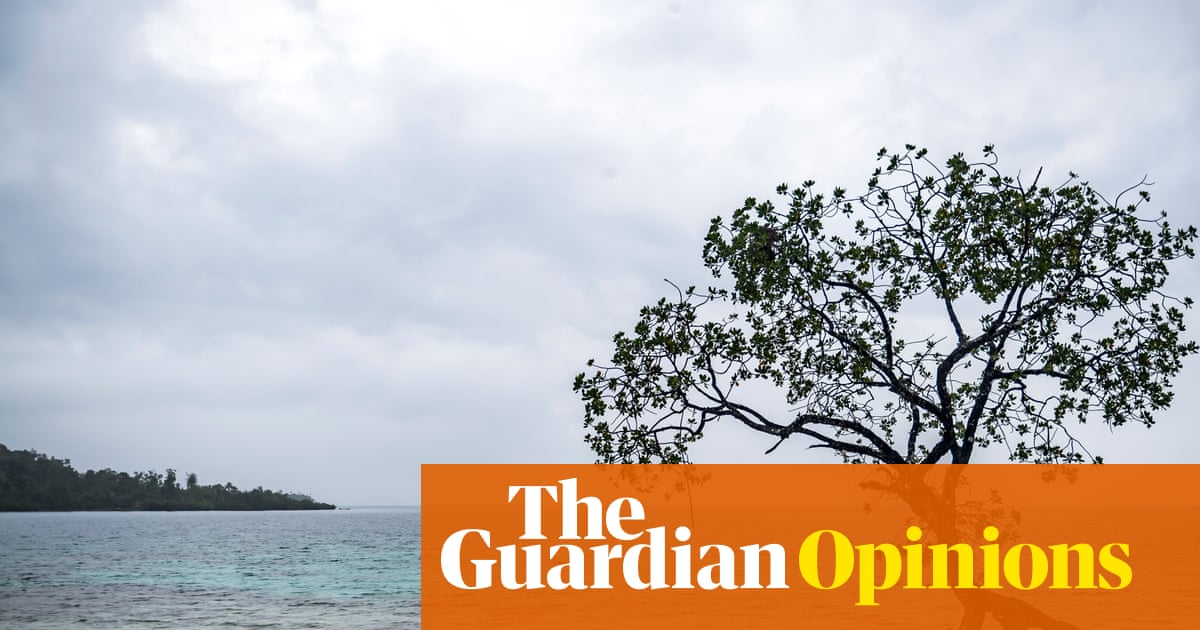Hiking and delicious food in Italy’s Monti Sibillini national park
All Italians race to la spiaggia in summer, leaving the hinterland marvellously empty. Tuscany gets a lot of love, but travel one region over to Umbria and Monti Sibillini national park bewitches with views of the Apennines and eyrie-like, honey-coloured hill towns such as Castelluccio, soaring above a plateau of brightly coloured poppies, cornflowers and daisies. It’s a gorgeous spot for hiking, biking and tracking down a trattoria to dig into specialities such as wild boar with locally grown lentils. You’ll find some of Italy’s finest salami in butcher shops in Norcia, as well as black truffles on the menus of restaurants such as the Michelin-starred Vespasia, which is in a 16th-century palazzo. Alternatively, you could join a tartufaio and their dog to head into the woods on a truffle-hunting tour.
How to do it Organic farm Agriturismo Casale nel Parco dei Monti Sibillini (doubles from £84 B&B) has truffles and wild herbs in its grounds, and a terrific restaurant serving up local and homegrown produce.
Mountain biking and Munros in Scotland
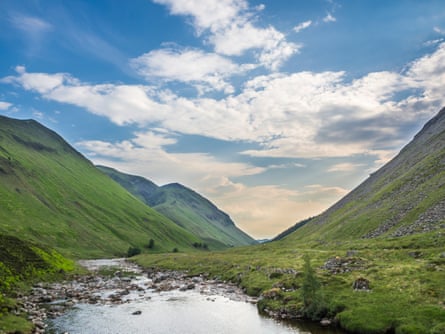
If you take rugged Highland scenery and turn the volume up, you get the Cairngorms national park, a 1,748 square mile expanse of lochs, glens, forests and Munros. Providing the weather behaves, you’ll be itching to get outdoors, whether climbing 1,245-metre (4,085ft) Cairn Gorm or 1,309-metre Ben Macdui, spotting capercaillie, red squirrels and ospreys in the Caledonian pine forest of Rothiemurchus Estate, or meeting the region’s free-roaming reindeer on a hill trip. There are wild swimming spots such as remote Loch Coire an Lochain, and visitors can go biking on Cairngorm Mountain’s slopes. By night, there’s fantastic stargazing in the Cairngorms Dark Sky Park around Tomintoul and Glenlivet.
How to do it A train from London to Aviemore takes 7-8 hours. It’s free to wild camp in the park. Or stay at a self-catering forest cabin at Cairngorm Lodges (two-nights from £264) on the park’s eastern fringes.
Alpine lake swimming and high-level hiking in Austria
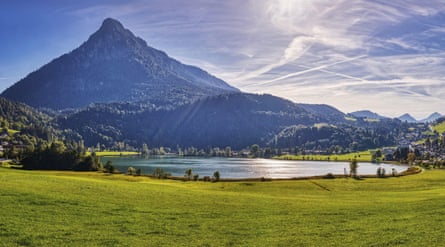
Between the Brandenberg Alps and the limestone turrets of the Wilder Kaiser massif, Kufstein is a full-on Alpine fantasy, capped with a medieval fortress. The fact that it’s a living town, rather than a resort, means there’s a great buzz here in summer. And Kufstein’s backyard is beautiful. Within minutes, you can reach Wilder Kaiser’s hiking trails on a single-seat chairlift floating above treetops and meadows to the 1,256-metre peak of Brentenjoch. The landscape is dotted with lakes such as forest‑rimmed Hechtsee, mountain‑flanked Stimmersee and glass-green Thiersee, where you can dive into some of Austria’s cleanest waters or rent a paddleboard.
How to do it Kufstein is half an hour from Innsbruck or an hour from Munich by train. Camp by the lakes or stay in town at historic Auracher Löchl (doubles from £175 B&B). The local guest pass gives you free use of public transport.
Switzerland’s only national park is hiking heaven
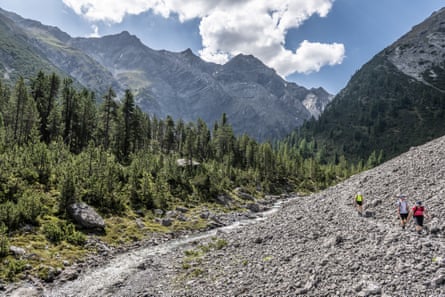
With the Alps running across 60% of Switzerland, it’s incredible that this green and lovely land has just one national park. But it’s a good one. Slamming into Italy, the Swiss national park in Graubünden’s Engadin valley is an utterly wild Unesco biosphere reserve. Nature has been in charge here since the park’s formation in 1914, and as a result, it’s hiking heaven. The full-day, 13-mile trek from Zernez to Lais da Macun (the Macun lakes) takes in a plateau beaded with 23 Alpine lakes. If you prefer company, sign up for guided ranger walks, including a wildlife-focused one in the Val Trupchun where, with luck and binoculars, you might spot marmots, ibex, chamois, deer and bearded vultures.
How to do it With good rail connections, Zernez is the gateway to the park and home to the visitor centre. Guided ranger hikes cost about £36. For an off-grid sleep, book Chamanna Cluozza (dorm beds £64). Deep in a forest, the hut is a 3½-hour hike from Zernez. Bring your sleeping bag.
Cycling around Lake Constance – and through three countries
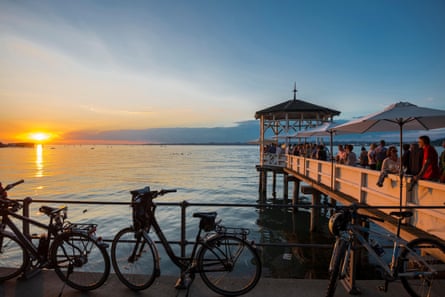
For uplifting views of the Alps by bike without the uphill slog, Lake Constance is unbeatable. Central Europe’s third largest lake, it delivers a massive shot of everything that makes Europe great – Roman ruins, medieval castles, gardens, gorges, wetlands, vineyards, orchards, thermal baths and beaches where you can strip off sweaty Lycra for a quick swim or a night spent camping under the stars. Looping around the lake and taking about a week to complete, the 170-mile (273km) Lake Constance Cycle Path, or Bodensee-Radweg as it’s known locally, is the biggie, rolling through three countries: Germany, Austria and Switzerland.
How to do it Avoid the midsummer madness of July and August for fewer crowds. Bikes and ebikes can be rented in towns fringing the lake. Konstanz in Germany is a great springboard, with good rail connections.
Turquoise lakes and Europe’s biggest ice cap in Norway

Mother nature had a wild time in Jostedalsbreen national park in western Norway, delivering a visual feast of mountain-flanked fjords, ice-blue glacial lakes and – the clincher – the 37-mile-long Jostedalsbreen, mainland Europe’s biggest ice cap. Ways to explore are many and varied – there’s an easy four-mile round trek past waterfall-wisped peaks to Briksdalsbreen, an offshoot of the mighty glacier, or an opportunity to kayak, canoe and paddleboard across the turquoise waters of Lovatnet Lake, with rock walls punching above. For a close encounter with the ice, slip on a helmet and crampons to trek across the Haugabreen arm of the glacier.
How to do it On the dreamy shores of Lovatnet Lake, Sande Camping (pitches from £18) is a crazily pretty spot to pitch a tent. Breogfjell Mountain Guides run six-hour guided glacier walks (£84) from mid-June to August.
Swimming and kayaking in the Julian Alps in Slovenia
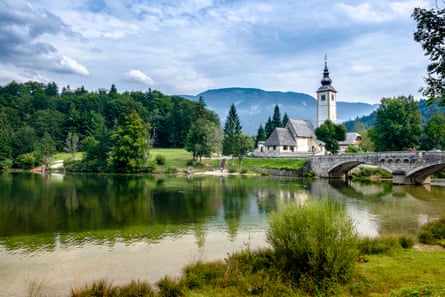
If you think Lake Bled is ridiculously lovely, wait until you clap eyes on Lake Bohinj, tucked away in the Julian Alps that tear across Triglav national park in Slovenia’s north-west. Here, limestone turrets and pinnacles rise like natural fortifications above forests and glacial lakes that chart the spectrum of blues and greens. Loveliest of the lot is mirror-like Lake Bohinj, where you can dive into jewel-coloured waters that reach 22C in summer. The pebble beach in Ukanc, on the lake’s western shore, is as lovely a spot as any. Arrive early in the morning and you’ll have it all to yourself as you swim, canoe, kayak or paddleboard in glassy waters.
How to do it Pitch a tent on the shore at eco-friendly Camp Bohinj (pitches from £25). At the boathouse, Pac Sport rents out paddleboards, canoes, kayaks and wooden rowboats.
A long-distance trek in the Dolomites in Italy
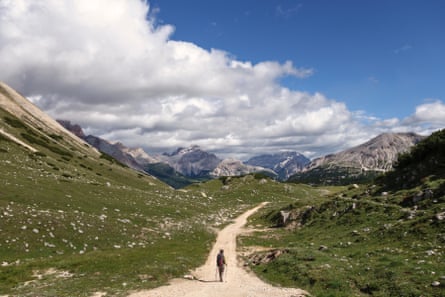
In the fiery blush of a summer sunset, the Dolomites are at their most entrancing, as the gold-pink light burnishes their buttresses, pinnacles and great fangs of rock. You can admire them from below, but you’ll get much closer on the 75-mile Alta Via 1, one of Italy’s most memorable hikes, reaching from Dobbiaco in the north to Belluno in the south. Negotiating steep, rocky inclines is rewarded with sublime views and stays at rustic huts like Rifugio Lagazuoi and Rifugio Cinque Torri, where you can dig into local specialities like polenta, venison and canederli (bread dumplings with speck and cheese), peer up at star-blanketed night skies and get a crack‑of-dawn start on the trail.
How to do it While the walk is certainly doable alone (book huts ahead for summer and get hold of Cicerone’s Alta Via 1 guide), logistically it’s easier to join a tour, such as the 10-night trip offered by Alpine Exploratory (from £2,880 guided, £1,790 self-guided).
Castle-hopping in Germany’s Bavarian Alps
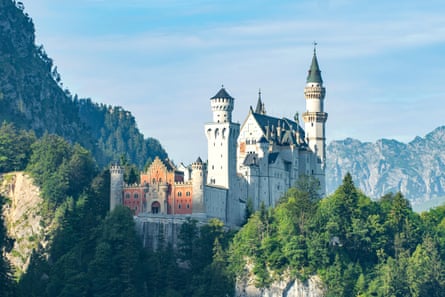
Where the Bavarian Alps muscle their way into Austria, Füssen looks like something out of a children’s story. The old town’s alleys are stacked with gabled, frescoed houses and cafe-lined squares, and lofty castles bear the fantastical imprint of “Mad” King Ludwig II (1845-1886). Mad or not, he had an eye for a winning location, which you’ll appreciate when you visit the riotously turreted and recently revamped Schloss Neuschwanstein, which was the blueprint for Disney’s Sleeping Beauty castle, and medieval Hohenschwangau, where little Ludwig grew up. There’s hiking, cycling and swimming at the lakes around Füssen, such as Forggensee, Hopfensee and Alpsee. All can be reached by bus for free with the local Füssen Card.
How to do it Füssen is two hours from Munich by bus and train (bahn.de). Take your pick of hotels and B&Bs in the town, such as Hotel Sonne (doubles from £130 B&B) in the historic centre, or camp by one of the lakes.
after newsletter promotion
The ultimate mountain bike park in the French Alps
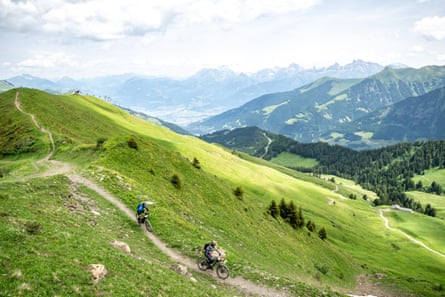
The French Alps punch high above Morzine in Portes du Soleil, 12 resorts strung between Lake Geneva and mighty Mont Blanc. Everyone raves about winter skiing in this chalet-lined village, but there’s lots happening in summer, when the steep slopes are given over to one of the world’s biggest bike parks – 400 miles (650km) of single tracks and heart-racing downhill trails. An extensive network of bike-friendly lifts links them up nicely. If you’re up for a bone-rattling challenge, tackle the Noire de Morzine from the Le Pléney cable car station. After you’ve stripped off sweaty Lycra and body armour, cool off with a swim in one of the crystal-clear lakes on Morzine’s doorstep, such as mountain‑clasped Lac de Montriond or forest-rimmed Mines d’Or. You can reach both within minutes on the free village buses.
How to do it Alpy Transfers runs regular coaches between Geneva airport and Morzine (2 hours, one-way £17), prebooking is essential. Morzine’s Multi Pass gets you access to lifts, lakes and lidos for £2.50 a day. For a rustic-chic place to sleep, check into Jardin Secret (doubles from £115) in Montriond, a self-catering micro-lodge with a sun terrace, hot tub and easy access to both slopes and lakes.
Walking in Spain’s wild Picos de Europa
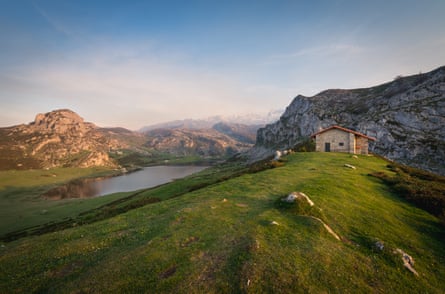
Spain is at its most ravishing in the 250-square-mile Picos de Europa national park in the Cantabrian mountains of the north. Here you can hike among jagged, lake-splashed peaks, ancient oak and beech forests, and deep, wildflower-flecked valleys where it’s silent enough to hear your own heartbeat – or perhaps the cry of a golden eagle. The untamed terrain here is best explored with a guide. For a deep dive, Much Better Adventures arranges a challenging hut-to-hut trek, ticking off highs such as the glacial Lakes of Covadonga, the 2,319-metre summit of La Padiorna and the sheer-walled Cares Gorge.
How to do it Much Better Adventures’ six-night, small-group trek costs from £875 per person, including local guides, breakfast, dinner and stays in mountain huts and rural guesthouses.
Waterfalls, springs and caves at Plitvice Lakes in Croatia
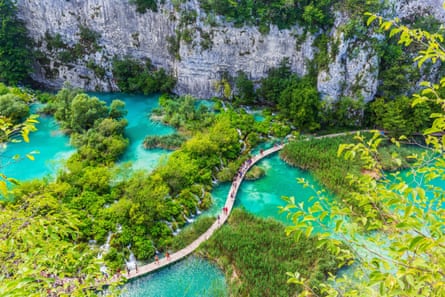
Most people who head to Croatia dash straight to the coast, but a step back from the Adriatic is the Unesco World Heritage site Plitvice Lakes national park. Against the backdrop of the karstic Dinaric Alps, the park has mineral-rich springs, cascading falls, caves and lakes that glitter jade, aquamarine, ink-blue and turquoise. Brown bears, wild boar, lynx and wolves prowl the old-growth beech and fir forests, and clouds of blue-winged butterflies bring a fairytale touch in summer. For a true flavour of the park, bring binoculars and follow the 11-mile Route K, a full-day hike that knits together all 16 of the lakes.
How to do it From Zagreb, buses and FlixBus coaches run frequently to Plitvička Jezera in just over two hours. There are lots of traditional stone-and-wood villas where you can spend the night, including Villa Verde (doubles from £93 B&B).
A front-row view of the Eiger in Switzerland
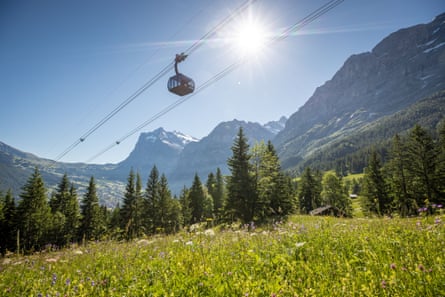
Switzerland’s outrageously beautiful Jungfrau region is the Alps on steroids, with its crashing waterfalls, gemstone lakes, cliff-hugging villages and the glacier-capped big three of the Eiger, Mönch and Jungfrau looming above it all. You could base yourself anywhere in these heights and reach the summits within minutes on vintage railways and state-of-the-art cable cars – but Grindelwald has the edge for outdoor adventure. As lively in summer as winter, the village has front-row views of the Eiger’s mile-high north face. The Eiger Express cable car links up to Eigergletscher, the trailhead for the astoundingly scenic, two-hour Eiger Trail. Or you can thunder towards the Eiger on ziplines, mountain carts and chunky scooters called Trottibikes from the First cable car station above Grindelwald.
How to do it Grindelwald is well connected by rail and can be reached in around nine hours from London via Paris, Strasbourg, Basel and Interlaken. Hotels are pricey, but you can save by camping at riverside Gletscherdorf (pitches from £36).
Practise yoga among Austria’s Alpine peaks

Sky-scraping peaks, scary slopes and après-ski parties draw folk to St Anton am Arlberg in Tyrol in winter. But when the snow melts, the village reveals its mellower side, with trails skipping through flower-freckled pastures to Alpine dairy huts like Putzen Alpe, where you can sample a brettljause (sharing board) of local ham and cheese, and watch the bell-swinging cows come home in the honeyed light of late afternoon. If you want to zone out even more from the rush of daily life, St Anton is right up there with the best places in the Alps for a spot of peak-gazing while doing yoga. Pick a meadow to practise your positions or sign up for classes and retreats at Arlflow.
How to do it St Anton is an hour from Innsbruck by train. In early September, the four-day Mountain Yoga Festival, celebrating its 10th anniversary in 2025, brings some of the world’s best teachers and yogis to the heights, with outdoor sessions, sunrise meditation, Alpine pasture hikes, talks and workshops. Run by passionate mountain lovers, Piltriquitron (doubles from £113 B&B) is a stylish, welcoming lodge in the heart of St Anton.
Wild swimming, wildlife and camping in Wales
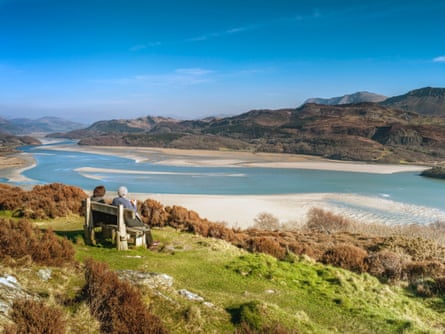
Come summer, conga lines of hikers trot up Wales’ highest peak, 1,085-metre Yr Wyddfa (Snowdon). If you would prefer to give them the slip, head south to Cefn Coed, a 17th-century, off-grid Welsh farm estate embedded in a wooded valley, where the slopes of Cadair Idris roll down to the shifting sands of the Mawddach estuary. It’s all about embracing the wild side of Eryri (Snowdonia) here, whether you’re striking out on foot on the nine-mile Mawddach Trail, which follows an old slate railway track, practising yoga in nature, going wildlife tracking or foraging for edibles you can transform into pickles, powders and pestos. Find your own wild swim spots along the river by day, and go on a starlit walk across the estate to look out for owls, badgers and, on mid-summer nights, glow-worms.
How to do it Cambrian Line trains stop in Barmouth, four miles from Cefn Coed, where you can camp in a clearing in oak woods (pitches £25-35), or for bigger groups there’s a 12-bed bunkhouse in the farm’s original dairy and bakehouse (two-night stays from £350).

 2 months ago
56
2 months ago
56





